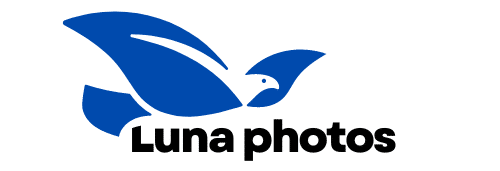What Are the Techniques for Effective Team Communication in Relay Races?

Communication is the cornerstone of teamwork, and it is especially crucial in the context of relay races. In a relay race, each team member runs a part, or a "leg," of the race, and then hands off a baton or similar item to the next runner. The overall performance of the team depends significantly on how well the team members communicate with each other during these transitions. This article explores the techniques that can be used to facilitate effective team communication in relay races.
The Importance of Team Communication in Relay Races
Relay races present a unique challenge because, unlike in many other team sports, the players are not on the field simultaneously. This means that communication between team members is not as straightforward as in other games. For example, a basketball player can easily pass the ball to a teammate who is in a better position to score. In a relay race, on the other hand, the baton pass is a critical moment that requires precision, coordination, and effective communication.
Also read : How are sports governing bodies addressing issues of diversity and inclusion in sports leadership?
Communication in this context can take various forms, from verbal instructions and cheers to non-verbal cues like body language and eye contact. The timing and clarity of these signals can make the difference between a successful baton pass and a dropped baton. Moreover, communication is also important before and after the race, during the planning and debriefing stages. Therefore, teams need to learn and practice effective communication techniques to improve their performance in relay races.
Techniques for Effective Pre-Race Communication
Before the race, team members need to discuss their strategy, understand their individual roles, and coordinate their efforts. This pre-race communication is crucial for setting the stage for a successful relay race.
In parallel : What are the psychological effects of fan engagement in virtual sports worlds?
Team building activities can be a great way to foster communication skills among team members. These activities can help break the ice, build trust, and promote open and honest communication. For example, teams can engage in role-playing exercises to simulate different race scenarios and discuss potential responses.
Additionally, each team member should know their position in the relay race order and the specific responsibilities that come with it. The first runner, for instance, needs to start strong and set the pace for the team, while the last runner needs to maintain the lead or make up for lost time. Clear and early communication of these roles can help avoid confusion during the race.
Techniques for Effective In-Race Communication
During the race, effective communication becomes even more challenging due to the physical exertion and time constraints. However, there are still several techniques that teams can use to communicate effectively.
One of them is developing a handoff routine. This routine could involve a specific sequence of actions, signals, or words that tell the next runner when to start running and when to reach for the baton. A well-practiced routine can ensure smooth and quick baton exchanges.
Non-verbal communication also plays an essential role in relay races. For example, runners can use eye contact to signal that they are ready for the baton handoff. Body language, such as the positioning of the hands and arms, can also provide important cues.
Another helpful technique is the use of code words or short phrases. These can be used to communicate a variety of messages quickly and effectively. For example, a team might use the word "go" to signal the start of a run, or the phrase "hand back" to instruct a runner to reach back for the baton.
Techniques for Effective Post-Race Communication
After the race, teams should take the time to debrief and discuss their performance. This post-race communication can provide valuable insights for future races.
One useful technique is to hold a team meeting where each member can share their perspective on what went well and what could be improved. This feedback can be used to refine the team’s strategies and communication techniques.
Another important aspect of post-race communication is acknowledging the efforts and contributions of each team member. Celebrating successes, no matter how small, can boost team morale and motivate members to continue working hard. At the same time, constructive criticism should be delivered in a tactful and supportive manner to promote learning and growth.
Conclusion
To sum up, effective team communication in relay races involves a combination of verbal and non-verbal techniques, both before, during, and after the race. From team building activities and role clarity to handoff routines and feedback sessions, there are many ways in which teams can enhance their communication skills. By doing so, they can coordinate their efforts more effectively, avoid costly mistakes, and ultimately, perform better in relay races.
Incorporating Communication Games to Enhance Teamwork
Aside from discussions and debriefings, integrating communication games into their training can help relay race teams strengthen their communication skills. These games not only promote teamwork and problem-solving skills but also make the learning process enjoyable for team members.
A classic game like the hula hoop relay can be adapted to focus on communication strategy. In this game, team members must pass a hula hoop around a circle without breaking hand contact. This requires clear communication and cooperation among team members. Similarly, a scavenger hunt game where clues are provided through a sequence of baton exchanges can mimic the pressure of a real relay race while emphasizing effective communication.
Another useful game for improving communication is the blindfold challenge, where one blindfolded team member (the outgoing runner) is guided by the rest of the team (the incoming runner and others) to navigate an obstacle course. This game encourages team members to give clear, concise instructions and fosters trust among them.
These games can serve multiple purposes, from breaking the ice and promoting bonding among team members to specifically enhancing communication and problem-solving skills. By incorporating them into their preparation routine, teams can significantly improve their coordination and performance in relay races.
Understanding and Implementing Effective Communication Strategy
An effective communication strategy is paramount to the success of a relay race team. This strategy should encompass every stage of the race – pre-race, during the race, and post-race. It should set clear expectations, establish a common language, and ensure regular feedback and improvement.
For instance, during the pre-race stage, the communication strategy should include defining roles clearly and ensuring that every team member understands their specific duties. Each team member must know exactly when and where they are expected to start running, and what signals they should look for from the incoming runner.
In the midst of the race, the strategy might involve specific hand signals, code words, or even a practiced routine for handing off the baton. The outgoing runner should know exactly what to expect from the incoming runner, and vice versa.
After the race, the communication strategy should involve a detailed debriefing where team members can share their experiences, reflect on their performance, and suggest improvements. This provides a safe space for constructive criticism and continuous learning, fostering a culture of growth and improvement.
Conclusion
In conclusion, effective communication is a critical element of success in relay races. It involves not just verbal instructions but also non-verbal cues, clear role definition, strategic use of communication games, and a well-thought-out communication strategy. By emphasizing these elements, relay race teams can bolster their collective performance, fostering an environment of trust, effective problem solving, and ultimately, success in their races. The goal is not just to run fast, but to run smart – and effective communication is a key part of that equation.
